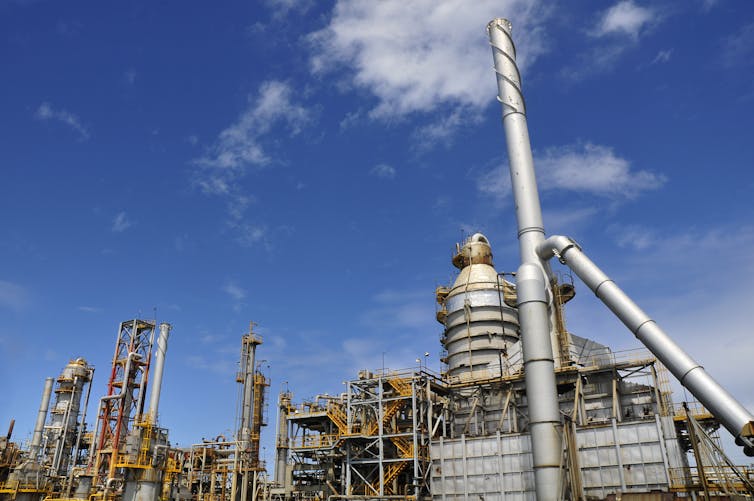Don't be fooled – Venezuela's Petro is not really a cryptocurrency
Courtesy of Daniele Bianchi, Warwick Business School, University of Warwick
Venezuela is suffering one of the worst economic crises of modern times. President Nicolás Maduro’s beleaguered government is overseeing scarcities of food and medicine, soaring crime rates and the collapse of public services and the health system.
But when it launched a new cryptocurrency, the Petro, in an Initial Coin Offering (or ICO) the virtually bankrupt country says it raised US$735m on the first day of the pre-sale.
Any rational investor would probably steer well clear of the 100m Petro made available. The ICO is obviously a way to raise money by getting around the sanctions against Venezuela, which prevent it from issuing bonds or securities in the regular financial system. It is in desperate need of US dollars, with inflation running into quadruple digits – which has made the Venezuelan bolívar worthless. Meanwhile, the production of oil, on which the country’s economy relies, has plummeted in the past year.
An interesting experiment
That said, the Petro certainly represents a very interesting experiment. It is the biggest ICO ever proposed and, if it hits its cap of around US$5 billion – which is highly debatable – that will represent about 5% of the total number of Ethereum cryptocurrency currently circulating and will equal more than a half of the entire revenues generated by ICOs up to 2017.
For Venezuela this is a smart option. Rather than restructuring the whole economy and linking a new currency to the US dollar, launching a cryptocurrency is much easier in an effort to fund the government and keep it functioning. If anything, because the Petro does not lead to any interference in the domestic political economy by third-party bailing-out institutions such as the IMF.

Venezuela’s oil production is down. shutterstock.com
It is fair to assume that the millions of US dollars being spent on the Petro are not coming from the US and Europe, as Venezuela is under strict financial sanctions and so trading in the Petro could land you in trouble. So it is probably coming from Asia and Middle East – and could be anybody from drug dealers to individual retail investors fancying a punt.
Having read the ICO documents it is unclear what the Venezuelan government plans to do with the money. More than half has been earmarked for a sovereign fund – which is yet to be created – and its exact purpose again looks quite blurry.
It is also very unclear as to the pricing of the Petro, which the document says will be linked to the price of a barrel of oil (currently about US$60) and given a “discount factor”, without defining how that is effectively calculated. In that respect, although anchored to the price of oil, the price of the Petro will be virtually controlled by the government. This could certainly be used to its advantage.
Not really a cryptocurrency
Ironically, Petro’s connection to the government goes against the whole idea of cryptocurrencies. They were originally designed to be decentralised and free from any government or central bank control.
In this sense the Petro is not really a cryptocurrency – it is a digital security or token, backed by oil reserves. You are not buying anything that can be freely mined and traded on open cryptocurrency exchanges. The mining is controlled by the government and, as explicitly mentioned in the ICO documents, it will decide what exchanges can trade the Petro. It is therefore simply a digital form of debt from a country with no financial credibility and that is badly mismanaging its economy.
This is the last resort of a country with practically nowhere else to go. Any credible democracy can raise money in the usual ways through bonds and securities, so I can only see other countries in similar problems doing this. I wouldn’t be surprised if countries like Russia are next in line to take advantage of the hype surrounding cryptocurrencies as they are suffering under sanctions as well and have lots of oil.
The Petro may be easy to buy in the pre-sale, where typically most, if not all, of the coins are sold in an ICO. Then the ICO carries on for an indefinite period until the Venezuelan government has sold the 100m Petros it is aiming for. That could take many weeks, if not months – and only then will investors be able to trade the Petro.
Once trading starts, it’s hard to see the price volatility that we have seen in other cryptocurrencies, because the price is essentially controlled by the government. It is not linked to supply and demand. So anyone thinking of buying Petro should think: it might be easy to buy now, but will you be able to trade it after the ICO?
![]() So despite representing a milestone in the growth of the cryptocurrency market, the Petro should be seen as a last-ditch attempt of a defaulting and desperate government to make a quick buck. It’s something that should probably raise concerns among anyone thinking of investing in it.
So despite representing a milestone in the growth of the cryptocurrency market, the Petro should be seen as a last-ditch attempt of a defaulting and desperate government to make a quick buck. It’s something that should probably raise concerns among anyone thinking of investing in it.
Daniele Bianchi, Assistant Professor of Finance, Warwick Business School, University of Warwick
This article was originally published on The Conversation. Read the original article.



